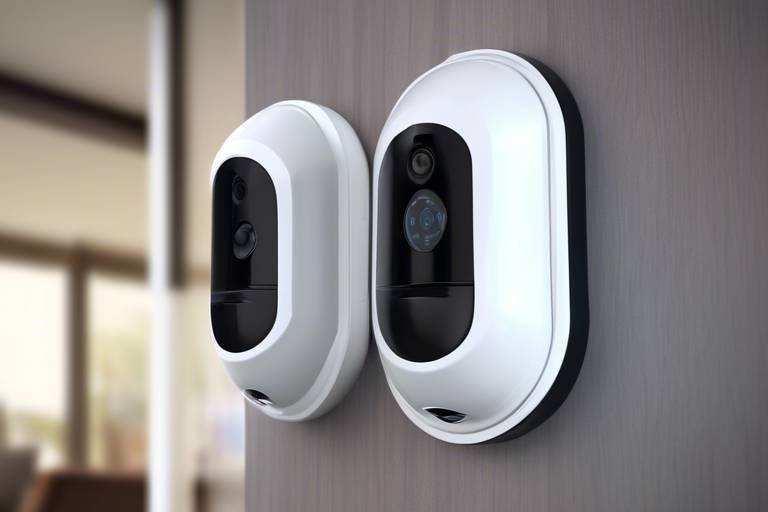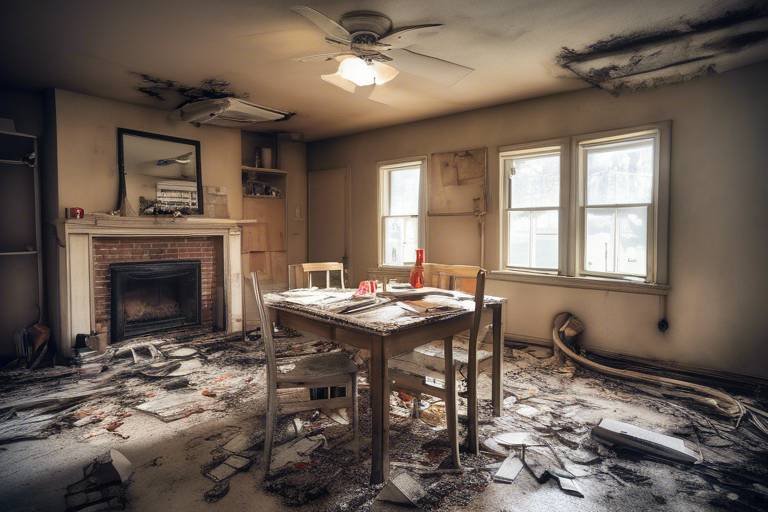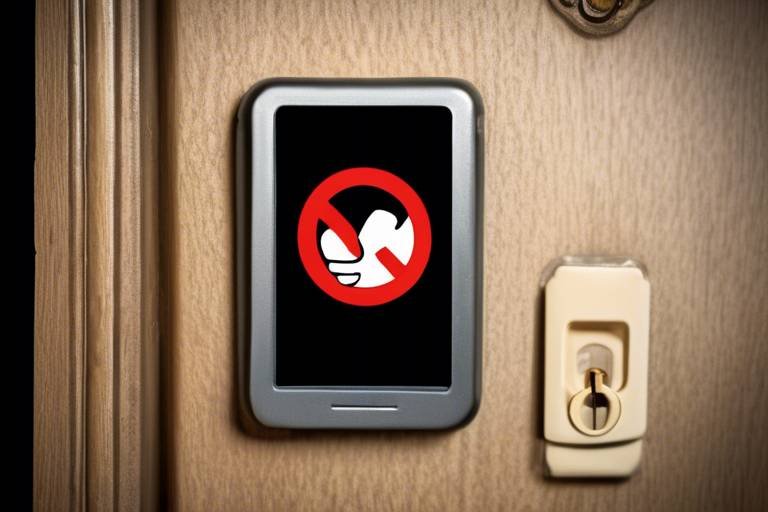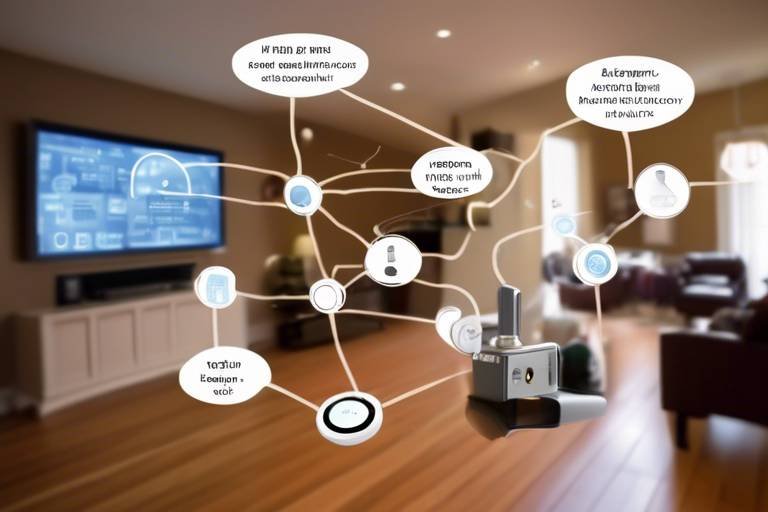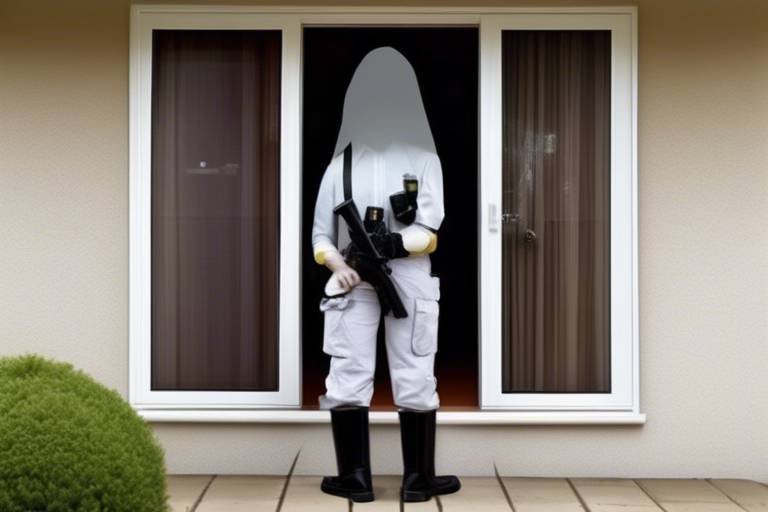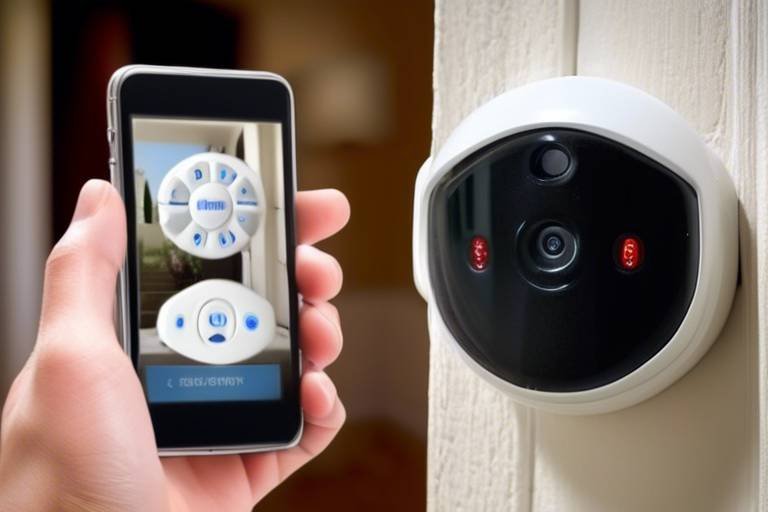Safety Tips for Homes with Small Children
Creating a safe environment for small children is not just a priority; it's a necessity. As parents and caregivers, we often feel like we're in a constant game of dodgeball, trying to anticipate the next potential hazard that could harm our little ones. From the moment they start crawling to when they take their first steps, children are naturally curious, exploring everything around them. This exploration, while essential for their development, can also lead to accidents if the home isn't properly childproofed. In this article, we will dive into some essential safety tips that can help you create a secure environment for your children, focusing on practical strategies that prevent accidents and provide peace of mind for parents. Let’s roll up our sleeves and get started on making your home a fortress of safety!
Childproofing is a crucial step in ensuring that your home is a safe haven for your little explorers. Think of it as setting up a protective bubble around your child that minimizes risks while allowing them the freedom to play and learn. One of the first steps in childproofing is securing heavy furniture, such as bookshelves and dressers, to the wall to prevent tipping. You wouldn’t want your child to climb on something that could come crashing down, right? Additionally, using safety gates in high-risk areas, like staircases, can significantly reduce the chances of falls. By taking these proactive measures, you can transform your home into a safer space.
The kitchen is often the heart of the home, but it can also be a danger zone for small children. With sharp knives, hot surfaces, and various hazardous substances, it’s essential to take extra precautions. One effective tip is to keep sharp objects out of reach; consider using drawer dividers to keep knives stored safely away from curious hands. Additionally, ensuring that hot pots and pans are placed on the back burners can help prevent accidental burns. But that’s not all; let’s dive deeper into specific kitchen safety measures that can make a world of difference.
Proper storage of cleaning supplies is vital in any home with small children. Many common household cleaners contain harmful chemicals that can pose serious risks if ingested. Therefore, it’s essential to use childproof locks on cabinets and store these items in high cabinets that are out of reach. Imagine a curious child discovering a bottle of bleach—yikes! To avoid such scenarios, make a habit of checking your cleaning supplies regularly and ensuring they are stored safely. A little prevention goes a long way!
Childproof locks are essential for cabinets and drawers in the kitchen. When selecting locks, look for options that are easy for adults to operate but challenging for little fingers. Installing these locks is usually a straightforward process, often requiring just a few screws. Make it a family project; involve your partner or older children in the installation process. This not only ensures safety but also reinforces the importance of keeping hazardous items away from younger siblings.
Creating a designated safe zone in the kitchen can help children understand where they can play and where they should stay away. Consider using colorful mats or rugs to define this area. You can also teach your children about safe zones by explaining why they should avoid certain areas, like the stove or the sink. This approach not only enhances safety but also encourages your child to develop an understanding of boundaries, which is a valuable lesson for life.
Establishing safe play areas is important for children’s well-being. Think of these spaces as little islands of safety amidst the ocean of potential hazards in your home. When setting up these areas, ensure they are free from sharp objects, choking hazards, and other potential dangers. Soft mats can be a great addition, providing a cushioned surface for falls. You can also use furniture to create a cozy nook where your child can play safely while still being within your sight. Remember, a little creativity can go a long way in making playtime both fun and safe!
The bathroom poses unique risks for small children. With slippery surfaces and the presence of water, it’s crucial to implement safety measures that can prevent accidents. One of the simplest yet most effective tips is to use non-slip mats in and around the bathtub. These mats can significantly reduce the risk of falls, which can lead to serious injuries. Also, never underestimate the importance of supervision during bath time. Let’s explore these bathroom safety tips further.
Non-slip bath mats are essential for preventing falls in the bathroom. When selecting a mat, look for one that has a strong grip and is machine washable for easy cleaning. A mat that stays put can make all the difference in ensuring your child’s safety during bath time. Plus, they come in various fun designs that can add a splash of color to your bathroom!
Supervision is critical during bath time. It’s easy to get distracted, especially when you have a million things on your mind. However, it’s vital to remain vigilant to prevent drowning and other accidents in the bathroom. Always stay within arm's reach of your child, and never leave them unattended, even for a moment. Think of bath time as a mini-adventure; your presence can turn it into a fun and safe experience.
Outdoor play is essential for children, offering them the chance to explore, learn, and develop physically. However, it also comes with its own set of risks. From busy streets to sharp objects in the yard, it’s important to implement safety precautions that protect your little ones while they enjoy the great outdoors. Let’s take a closer look at the necessary measures you can take.
Selecting safe play equipment is vital for outdoor safety. When shopping for toys and structures, always look for age-appropriate options that are well-maintained. Check for any sharp edges or loose parts that could pose a risk. Think of it like buying a car; you wouldn’t drive off the lot without checking for safety features, right? The same principle applies when choosing play equipment for your child.
Supervision in outdoor areas is essential. Whether your child is playing in the backyard or at a park, keeping a watchful eye is crucial. It’s easy for kids to wander off or get into something they shouldn’t. Setting clear boundaries and discussing them with your child can help keep them safe. Remember, the great outdoors is full of wonder, but it’s also full of potential hazards that require your attention.
Q: What are the first steps to childproofing my home?
A: Start by securing heavy furniture, using safety gates, and removing small items that could be choking hazards. Consider using corner protectors on sharp furniture edges as well.
Q: How can I make my kitchen safer for my child?
A: Store sharp objects and cleaning supplies out of reach, use childproof locks on cabinets, and create a designated safe zone within the kitchen.
Q: What should I do if my child has an accident?
A: Stay calm, assess the situation, and seek medical help if necessary. It's essential to have a first-aid kit readily available at home.
Q: How can I encourage my child to play safely outdoors?
A: Set clear boundaries, choose safe play equipment, and supervise them while they play. Discuss the importance of safety regularly.
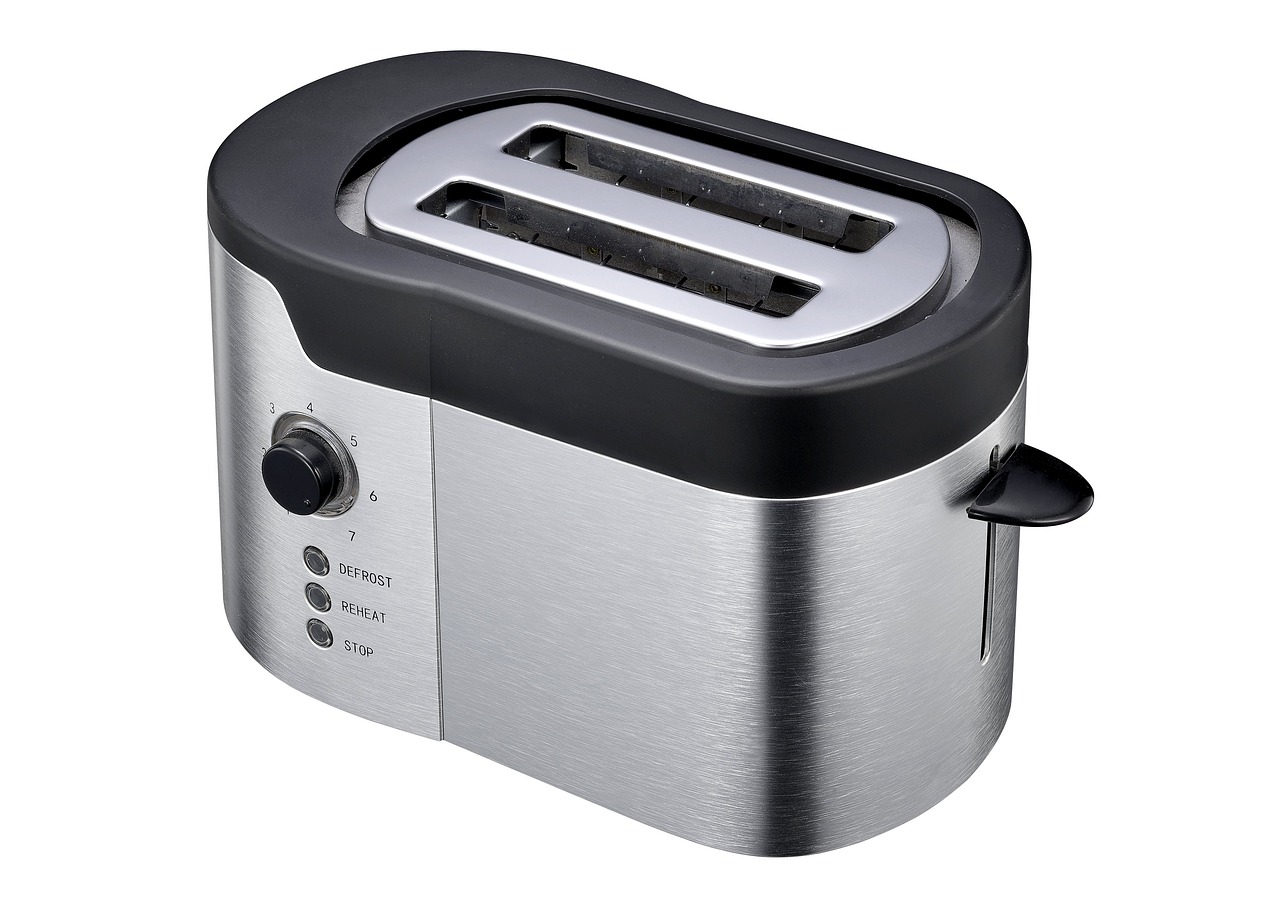
Childproofing Your Home
Childproofing your home is not just a precaution; it’s a necessity for every parent or caregiver. Just think of your home as a fortress where your little ones are the royalty. You want to ensure that they are safe from any potential threats lurking behind every corner. Accidents can happen in the blink of an eye, and it's crucial to take proactive measures to create a secure environment. So, what are the most effective strategies for making your home a safer haven?
First and foremost, you should start by securing heavy furniture. Tall bookshelves, dressers, and cabinets can pose a significant risk if they tip over. Use wall anchors to attach these pieces to the wall, which will help prevent them from falling during playtime or an unexpected earthquake. This simple step can save you from a potential disaster.
Another vital area to focus on is the use of safety gates. These are essential for keeping curious toddlers away from stairs and other hazardous areas in your home. Install gates at the top and bottom of staircases, as well as in doorways leading to rooms that are off-limits. Make sure the gates are securely mounted and can withstand a good push from an adventurous child.
Additionally, consider the layout of your home. Rearranging furniture can make a world of difference. Create open spaces where children can play safely without the risk of bumping into sharp corners or heavy objects. Soft furnishings like rugs and cushions can help cushion falls, making the environment more forgiving for little explorers.
Don’t forget about electrical outlets. These can be a magnet for curious fingers. Use outlet covers to prevent children from inserting objects into sockets. This small investment can prevent severe electrical shocks and keep your little ones safe. And while you’re at it, ensure that cords from blinds and electronics are out of reach or secured, as they can pose strangulation risks.
Finally, it’s essential to teach your children about boundaries and safety from an early age. While childproofing is crucial, educating your kids about what is safe and what isn’t will empower them to make smart choices as they grow. Engage them in conversations about safety, and make it a fun learning experience. Think of it as equipping them with a treasure map to navigate their safe kingdom.
In summary, childproofing your home is a multi-faceted approach that combines physical alterations, thoughtful organization, and education. By implementing these strategies, you can create a secure environment that allows your children to explore and play freely, giving you peace of mind as a parent.
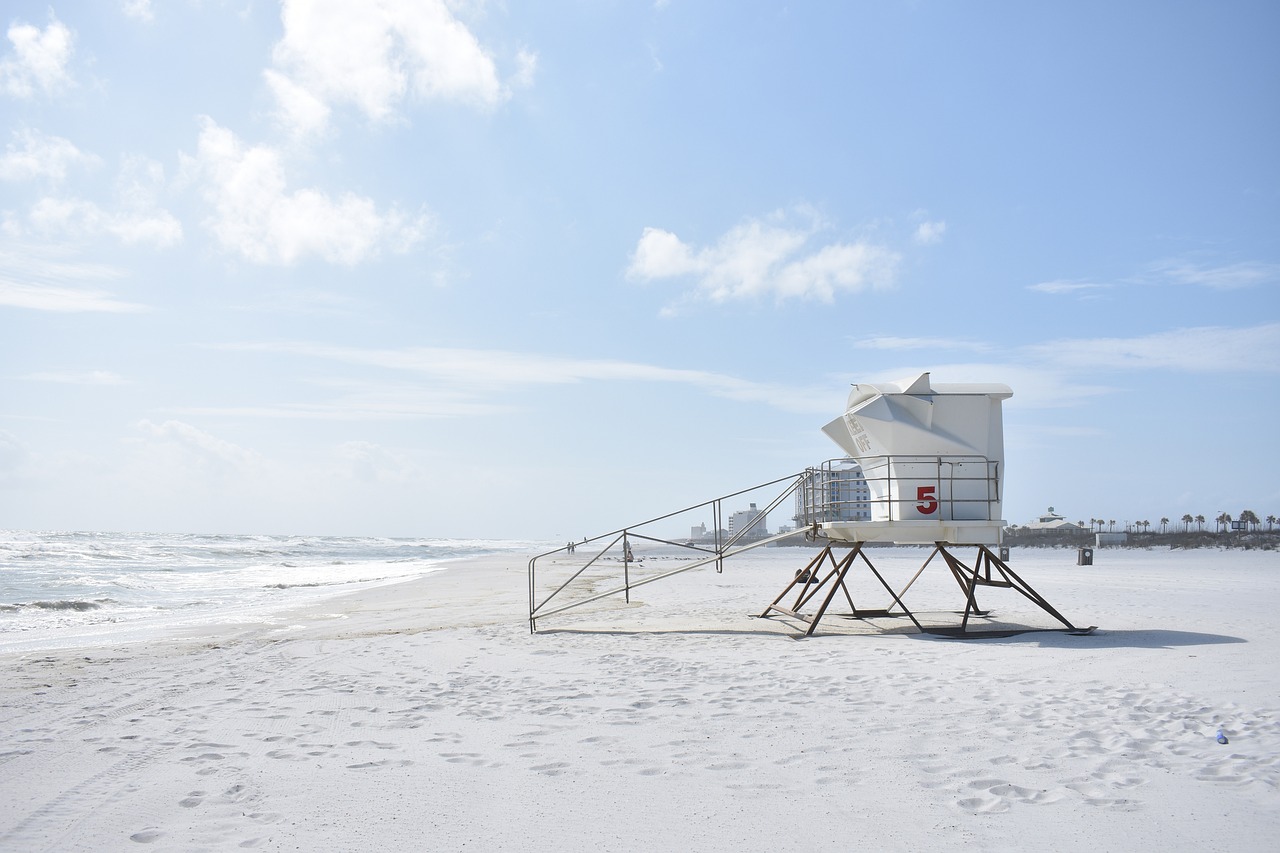
Kitchen Safety Measures
The kitchen is often considered the heart of the home, but it can also be a dangerous place for small children. With all the hot surfaces, sharp objects, and hazardous substances, it’s essential to implement effective safety measures to keep your little ones safe. Imagine a bustling kitchen filled with the aroma of delicious food, but lurking beneath that comforting scene are potential hazards that could lead to accidents. So, how can we transform this vibrant space into a safe haven for our children? Let’s dive into some practical kitchen safety measures that every parent should know!
First and foremost, it's crucial to keep sharp objects like knives and scissors out of reach. Consider using a magnetic knife strip mounted high on the wall, which not only keeps knives secure but also frees up drawer space. Additionally, store all utensils in a locked drawer or cabinet. This way, you can enjoy your culinary adventures without the constant worry of your child reaching for something dangerous. Remember, even mundane items like peelers or graters can pose a risk if mishandled!
Next, let's talk about the importance of keeping hot surfaces and appliances secured. Children are naturally curious, and the kitchen can be a playground of exploration for them. To mitigate risks, always use back burners when cooking and turn pot handles inward to prevent little hands from grabbing them. Installing stove knob covers can further enhance safety. These simple steps can significantly reduce the likelihood of burns and scalds, allowing you to cook with peace of mind.
Another critical aspect of kitchen safety is managing hazardous substances. Cleaning supplies, detergents, and other chemicals can be incredibly harmful if ingested. Make it a priority to store these items in high cabinets that are out of reach of children. For added security, consider using childproof locks on all cabinets and drawers containing potentially dangerous items. This small investment can save you from a world of worry!
Proper storage of cleaning supplies is vital for maintaining a safe kitchen environment. Always keep these items in their original containers with labels intact. This helps prevent accidental misuse and ensures you know exactly what each product is. If your cleaning supplies come in large containers, consider transferring them into smaller, child-resistant bottles. Additionally, make it a habit to regularly check the expiration dates on these products and dispose of any that are no longer safe to use.
Childproof locks are essential for cabinets and drawers that store hazardous materials. When selecting locks, look for options that are easy for adults to operate but difficult for children. There are many types available, including sliding locks, magnetic locks, and cabinet latches. Installation is usually straightforward, requiring minimal tools and time. By taking this step, you're not only protecting your child but also instilling a sense of responsibility towards safety in your household.
Creating a designated safe zone in the kitchen can significantly enhance safety. This area should be free from hazards and filled with safe items that your child can explore. For example, consider designating a low cabinet filled with plastic bowls, measuring cups, and other non-breakable items. This allows your child to engage in play while you’re busy cooking, keeping them occupied and away from danger. Teaching your child about these safe zones can empower them and help them understand kitchen boundaries.
In conclusion, kitchen safety measures are not just about removing hazards but also about creating an environment where children can learn and explore safely. By implementing these strategies, you can transform your kitchen into a safer space, allowing you to focus on what truly matters: making memories with your loved ones. So, the next time you step into your kitchen, remember that a little precaution goes a long way in keeping your children safe!
- What are the best childproof locks for kitchen cabinets? Look for locks that are easy for adults to use but difficult for children, such as magnetic locks or sliding locks.
- How can I teach my child about kitchen safety? Use simple language and demonstrations to explain safe zones and boundaries within the kitchen.
- Are there safe play items I can keep in the kitchen? Yes! Consider using non-breakable items like plastic bowls and measuring cups to create a safe play area.
- What should I do if my child gets into cleaning supplies? Always seek immediate medical attention and keep the number for poison control handy in case of emergencies.
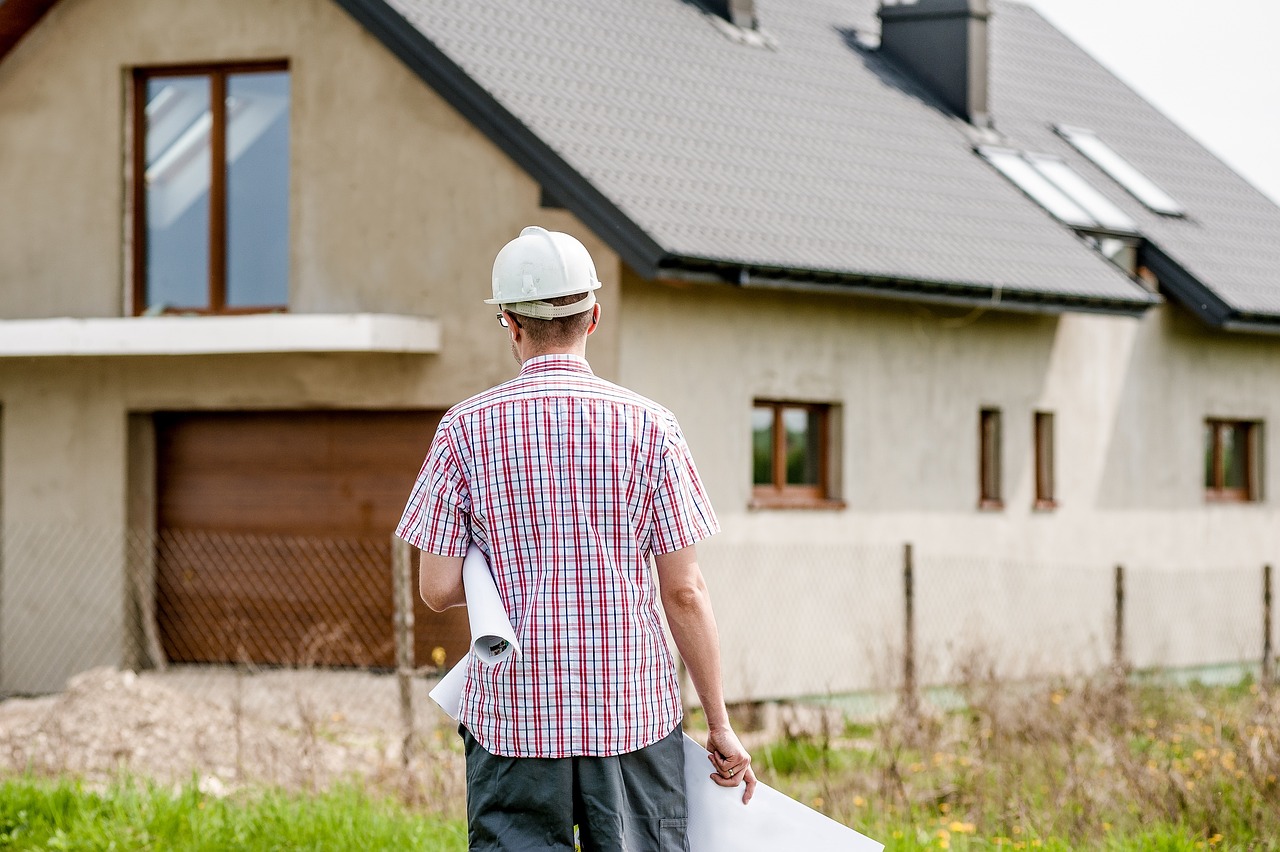
Storing Cleaning Supplies Safely
When it comes to keeping your little ones safe, storing cleaning supplies properly is non-negotiable. Imagine a curious toddler, their tiny fingers reaching for a brightly colored bottle under the sink. It's a parent's nightmare! Cleaning supplies often contain harmful chemicals that can pose serious risks if ingested or even touched. Therefore, it’s crucial to take proactive steps to secure these items.
First and foremost, consider using childproof locks on cabinets and drawers where cleaning supplies are kept. These locks are designed to withstand the determined efforts of small hands while still allowing adults easy access. Installing these locks is a simple yet effective way to enhance safety in your home. You can find a variety of locks available on the market, from sliding locks to magnetic ones, ensuring that there’s a solution that fits your needs.
Additionally, it's wise to store cleaning supplies in high cabinets that are out of reach of children. Even if you think you’ve childproofed your home, it’s essential to remember that children are surprisingly resourceful. They can climb, pull, and reach for things you’d never expect! By placing hazardous materials on high shelves, you significantly reduce the risk of accidental exposure.
Here’s a quick checklist to ensure you’re storing cleaning supplies safely:
- Use childproof locks on all cabinets containing cleaning supplies.
- Store all hazardous materials on high shelves.
- Regularly check your cleaning products for safety seals.
- Keep all products in their original containers to avoid confusion.
Another critical aspect of safe storage is keeping cleaning products in their original containers. This practice not only helps you identify the contents but also ensures that safety information and instructions are easily accessible. It’s tempting to transfer liquids into more convenient bottles, but this can lead to disastrous mix-ups. Always remember, a little caution goes a long way!
In summary, storing cleaning supplies safely is a vital part of creating a secure environment for your children. By using childproof locks, placing items on high shelves, and keeping products in their original containers, you can significantly reduce the risk of accidents in your home. Remember, safety is not just a priority; it’s a lifestyle choice that protects your loved ones.
Q: What are the best types of childproof locks for cabinets?
A: The best childproof locks vary based on your cabinets, but magnetic locks and sliding locks are popular choices. They are easy for adults to use but challenging for children.
Q: How can I make sure my cleaning supplies are safe?
A: Always store cleaning supplies out of reach, use childproof locks, and keep products in their original containers. Regularly check for safety seals and dispose of any expired products.
Q: At what age can I start teaching my child about cleaning product safety?
A: It’s never too early to start teaching your child about safety. Even toddlers can learn to recognize that certain items are off-limits. As they grow older, you can explain the dangers in more detail.

Using Childproof Locks
When it comes to ensuring your little ones are safe, is a game changer. These locks act as a barrier, preventing curious fingers from accessing cabinets and drawers that may hold dangerous items. Imagine a world where you can cook in peace, knowing your child can’t get into the cleaning supplies or sharp utensils. Sounds like a dream, right? Well, it can be your reality with just a few simple installations!
First, let’s talk about where to install these locks. The most critical areas include:
- Kitchens: Cabinets containing cleaning supplies, sharp knives, and other hazardous items.
- Bathrooms: Under-sink cabinets that may house medications and cleaning products.
- Living Areas: Drawers that might contain small objects, electronics, or anything that could pose a choking hazard.
Choosing the right type of childproof lock is essential. There are several options available, each with its own benefits:
| Type of Lock | Description | Pros | Cons |
|---|---|---|---|
| Magnetic Locks | Installed inside cabinets, opened with a magnetic key. | Effective and invisible; difficult for kids to figure out. | Keys can be misplaced. |
| Sliding Locks | Locks that slide into place on cabinet doors. | Easy to install and operate. | May be easier for older children to manipulate. |
| Strap Locks | Flexible straps that wrap around cabinet handles. | Versatile and can fit various sizes. | Can wear out over time. |
Once you’ve selected the locks that suit your needs, the installation process is typically straightforward. Most childproof locks come with adhesive backing, making them easy to install without tools. However, for those that require screws, a simple screwdriver will do the trick. Make sure to follow the manufacturer's instructions closely to ensure the locks function correctly.
After installation, it’s essential to test the locks to confirm they work effectively. You wouldn’t want to discover a lock is faulty after your child has already accessed something dangerous! Regularly check the locks to ensure they remain secure, especially if your child is particularly adventurous or determined.
Lastly, while childproof locks are a fantastic preventative measure, they are not a substitute for supervision. Always keep an eye on your little ones, even in a seemingly safe environment. Think of childproof locks as a safety net; they’re there to catch the little mishaps that can happen when you’re not looking.
In conclusion, investing time and effort into installing childproof locks can significantly enhance the safety of your home. It’s a small step that can lead to big peace of mind. Remember, the goal is to create a secure environment where your child can explore and learn without unnecessary risks. So, roll up your sleeves, get those locks installed, and enjoy a safer home!
Q: How do I know which type of childproof lock is best for my home?
A: Consider the specific areas you want to secure and the items you want to keep out of reach. Magnetic locks are great for cabinets, while strap locks can be more versatile for various handles.
Q: Are childproof locks easy to install?
A: Yes! Most childproof locks come with simple installation instructions, and many use adhesive backing for easy attachment.
Q: Should I still supervise my child even with childproof locks installed?
A: Absolutely! Childproof locks are a great safety measure, but they are not a replacement for adult supervision.
Q: Can older children figure out how to open childproof locks?
A: While most childproof locks are designed to be secure, older children may eventually learn how to manipulate them. Regularly assess the effectiveness of your locks as your child grows.
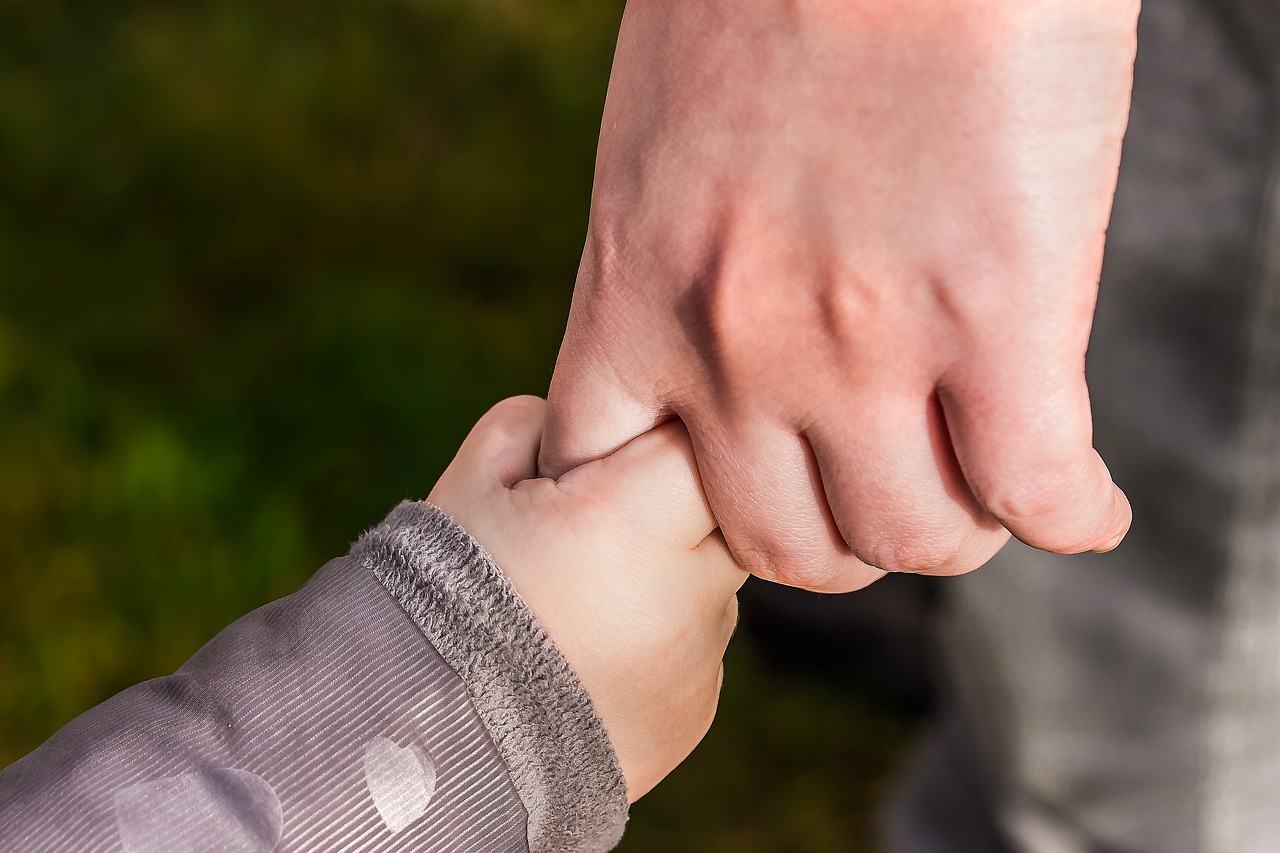
Designating a Safe Zone
Creating a designated safe zone in your kitchen is not just a good idea; it's a necessity when you have small children running around. Imagine the kitchen as a bustling hub of activity, where delicious meals are prepared and family memories are made. However, it can also be a minefield of potential hazards for curious little hands. By establishing a safe zone, you can create a space where your child can explore and play without the constant worry of accidents.
First and foremost, choose an area of the kitchen that is away from the stove, sharp objects, and cleaning supplies. This could be a corner with a soft rug or a small table where your child can engage in safe activities like coloring or playing with toys. It's like giving them their own little fort within the chaos of the kitchen! This not only keeps them entertained but also allows you to keep an eye on them while you cook or clean.
Next, make sure to communicate the boundaries of this safe zone to your child. Use simple language and gestures to explain which areas are off-limits. You can even turn this into a fun game! For example, you can say, “This is your special play area, and over there is where we cook. We need to stay safe, right?” Reinforcing the concept of safety can help them understand the importance of staying within that designated space.
Additionally, consider placing some child-friendly items in the safe zone. This could include plastic utensils, measuring cups, or even a small play kitchen. These items will not only keep your child entertained but also allow them to mimic your cooking activities, making them feel included while ensuring they are safe. It’s like giving them a taste of independence while keeping them secure!
Finally, remember that supervision is key. Even in a designated safe zone, children can be unpredictable. Regularly check in on them and engage in their play to ensure they remain safe and happy. By doing this, you’re not just creating a physical barrier but also building a trusting relationship where your child feels secure and understood.
In summary, establishing a safe zone in your kitchen can significantly reduce the risk of accidents while allowing your child to explore their environment. It’s a win-win situation! You get peace of mind, and they get a fun and safe space to play. So, roll up your sleeves, create that safe zone, and watch your little ones thrive in a secure environment!
- What should I include in my child's safe zone? Include soft toys, plastic kitchen utensils, and other non-hazardous items that can keep them entertained.
- How can I teach my child about kitchen safety? Use simple language and fun games to explain the boundaries and importance of staying safe in the kitchen.
- Is supervision always necessary in a safe zone? Yes, even in a designated safe zone, children should always be supervised to ensure their safety.

Safe Play Areas
Creating for your little ones is not just a good idea; it's essential for their well-being and development. Children are naturally curious and love to explore, which can sometimes lead them into unsafe situations. To ensure they can enjoy their playtime without unnecessary risks, it's crucial to establish designated spaces that are free from hazards. Think of these areas as mini sanctuaries where kids can let their imaginations run wild while you can relax knowing they’re safe.
When designing a safe play area, consider the following factors:
- Location: Choose a spot that is away from busy roads and potential dangers like swimming pools or steep drops.
- Surface: Opt for soft surfaces such as grass, rubber mats, or sand to cushion falls. This can significantly reduce the risk of injury.
- Boundaries: Clearly define the play area with fences or markers to help children understand where they can and cannot go.
Moreover, it’s important to regularly check the play area for safety. Look out for any sharp objects, broken toys, or other potential hazards that could harm your child. A simple routine of inspecting the space can make a world of difference. Just like you would regularly check the oil in your car to ensure it runs smoothly, maintaining the safety of your child’s play area requires the same level of diligence.
In addition to physical safety, consider the emotional and social aspects of play. Children thrive in environments where they feel secure and can interact with their peers. Encourage playdates and group activities in these safe zones. This not only fosters friendships but also teaches children how to navigate social situations. It's like planting seeds in a garden; with the right environment, they will flourish.
Finally, don't forget to involve your children in the process! Teach them about the importance of safety and what they should be aware of while playing. You can set up simple rules together, such as not running too fast or sharing toys. This not only empowers them but also instills a sense of responsibility. After all, teaching children about safety is like giving them a toolbox for life; the more tools they have, the better equipped they will be to handle various situations.
| Question | Answer |
|---|---|
| What materials are best for a safe play area? | Soft materials like grass, rubber mats, or sand are ideal as they can cushion falls and minimize injuries. |
| How can I make my outdoor play area safer? | Regularly inspect the area for hazards, use fences to define boundaries, and ensure play equipment is age-appropriate and well-maintained. |
| Should I supervise my child while they play? | Yes, supervision is crucial to ensure your child's safety and to respond quickly in case of an accident. |

Bathroom Safety Tips
The bathroom, often regarded as a sanctuary for adults, can transform into a perilous playground for small children. With slippery surfaces, sharp objects, and a plethora of hazardous substances, it’s essential to implement effective safety measures. By creating a secure bathroom environment, you not only protect your little ones but also gain peace of mind as a parent or caregiver. So, how can you make your bathroom a safer space? Let’s dive into some practical tips that will keep your children safe while allowing them to explore this essential area of the home.
One of the most critical components of bathroom safety is the installation of non-slip bath mats. These mats offer a protective layer between your child and the slippery bathroom floor, reducing the risk of falls and injuries. When selecting a non-slip mat, consider the following:
- Material: Look for mats made of rubber or textured materials that provide a firm grip.
- Size: Choose a mat that covers a significant area of the floor, especially around the tub and sink.
- Washability: Opt for mats that are machine washable for easy maintenance.
In addition to non-slip mats, constant supervision during bath time is non-negotiable. Drowning can occur in mere seconds, and children can slip under the water without making a sound. Therefore, it’s crucial to never leave your child unattended in the bath, even for a moment. A good practice is to keep all necessary items within arm's reach before starting the bath, so you won’t be tempted to step away. Remember, a few seconds can make all the difference!
Moreover, it’s vital to store hazardous items like cleaning supplies and medications out of reach. Consider using childproof locks on cabinets and drawers to prevent curious hands from accessing harmful substances. Installing these locks is straightforward; simply follow the manufacturer’s instructions, and ensure they are placed at a height that is inaccessible to your child. This small step can significantly reduce the risks associated with toxic chemicals.
Creating a designated safe zone in the bathroom can also be beneficial. This means teaching your children about areas that are off-limits, such as the toilet or the bathtub while not in use. You can even use colorful stickers or markers to highlight these boundaries, making it a fun learning experience for your child. The more they understand about their environment, the safer they will be.
In summary, bathroom safety is a multi-faceted approach that combines vigilance, the right tools, and education. By implementing these strategies, you can transform your bathroom from a potential hazard into a safe haven for your children. Remember, safety doesn’t have to be boring; it can be an engaging part of your family’s routine!
Q: What should I do if my child slips in the bathroom?
A: If your child slips, stay calm. Assess their condition and provide comfort. If they seem injured, seek medical attention immediately.
Q: How can I teach my child about bathroom safety?
A: Use fun games or stories to explain bathroom safety rules. Role-playing can also help them understand the importance of being cautious.
Q: Are there any specific products you recommend for bathroom safety?
A: Look for non-slip mats, childproof locks, and faucet covers. These products can significantly enhance safety in your bathroom.
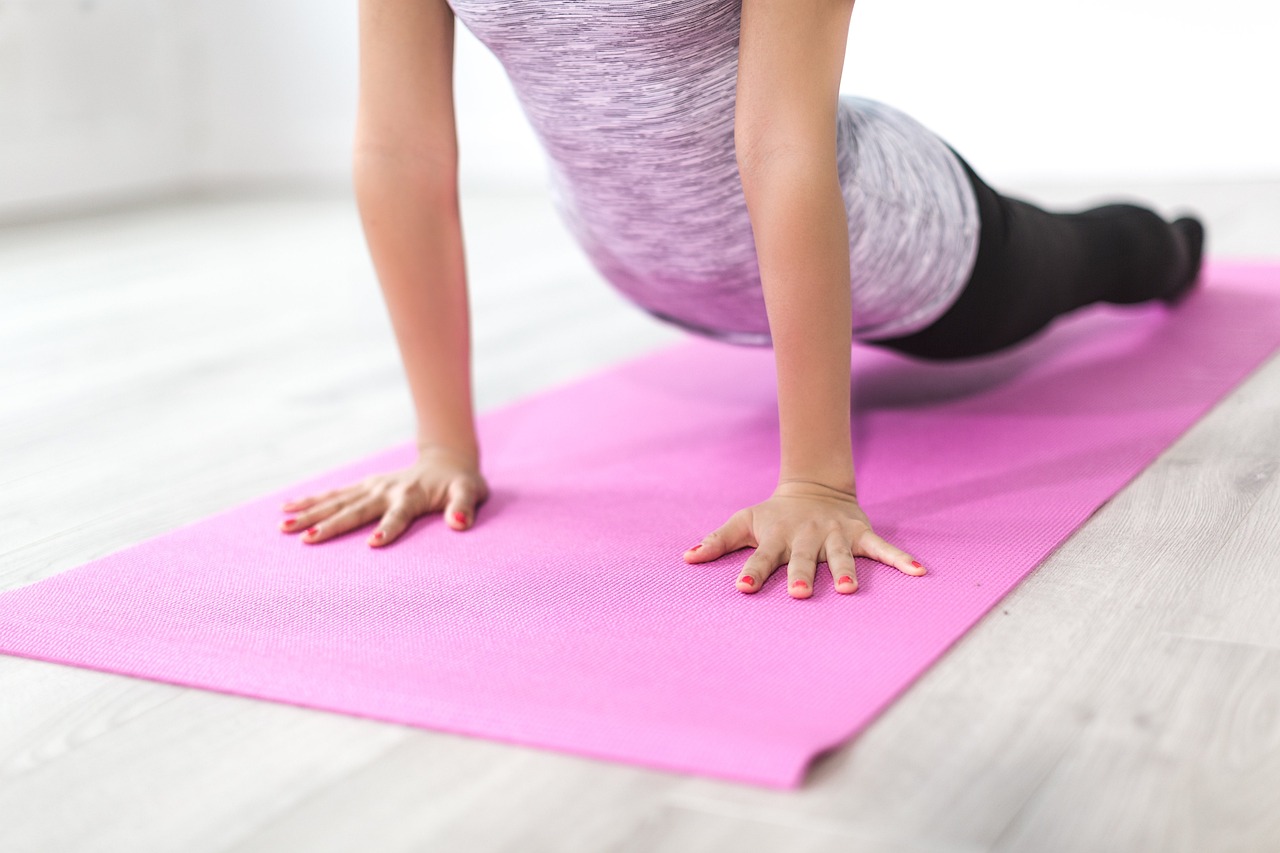
Non-Slip Bath Mats
When it comes to keeping your little ones safe during bath time, are a game changer. These mats are designed to provide a secure grip on the bathroom floor, significantly reducing the risk of slips and falls. Imagine your child, all bubbly and excited, reaching for their favorite rubber duck. The last thing you want is for them to lose their footing and take a tumble! That's where these mats come into play.
Choosing the right non-slip bath mat involves more than just picking a pretty color. You want to ensure that it has a strong grip and is made from materials that can withstand moisture without becoming a breeding ground for mold and mildew. Look for mats with suction cups on the bottom; these will adhere firmly to the tub or floor, providing that extra layer of safety. Additionally, opting for mats made from quick-drying materials can help keep your bathroom hygienic and free from unpleasant odors.
Another crucial aspect to consider is the size of the mat. A larger mat can cover more surface area, which is particularly beneficial for active toddlers who might be moving around a lot in the tub. However, it's essential to ensure that the mat fits well within your bathtub or bathroom space without overlapping the edges, as this could create tripping hazards.
Moreover, it’s wise to regularly check your non-slip bath mat for wear and tear. Over time, the effectiveness of the suction cups can diminish, and the mat may need replacing to maintain optimal safety. Incorporating this simple yet effective element into your bathroom can provide peace of mind, allowing you to enjoy bath time with your children without constant worry.
In summary, non-slip bath mats are an essential safety feature for any family with small children. They not only enhance the safety of your bathroom but also make bath time a more enjoyable experience for everyone. So, before your next bath time adventure, make sure you have a reliable non-slip bath mat in place!
- How often should I replace my non-slip bath mat? It’s recommended to replace your non-slip bath mat every 6 to 12 months, depending on wear and tear.
- Can I wash my non-slip bath mat? Yes! Most non-slip bath mats are machine washable, but always check the care instructions on the label.
- What materials are best for non-slip bath mats? Look for mats made from rubber or PVC, as these materials provide excellent grip and durability.
- Do non-slip bath mats work on all types of flooring? Non-slip mats are most effective on smooth, non-porous surfaces. Always ensure the mat is compatible with your specific flooring type.
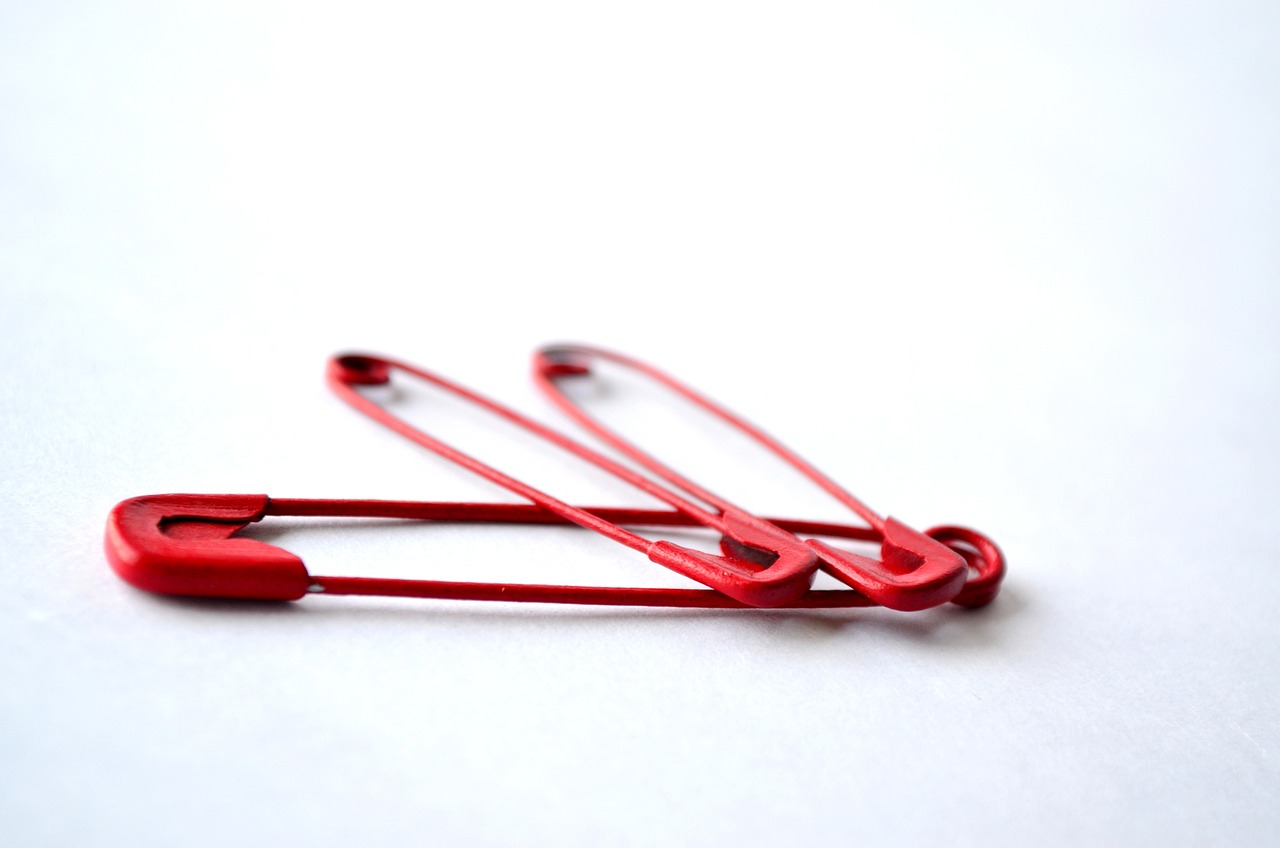
Supervision During Bath Time
When it comes to bath time, supervision is absolutely critical. Picture this: your little one is splashing around in the tub, giggling and having the time of their life. But in the blink of an eye, that innocent fun can turn into a dangerous situation. Drowning can happen in just a few inches of water, and it only takes a moment for a child to slip under the surface. Therefore, keeping a watchful eye on your child during bath time is not just a suggestion; it’s a necessity.
So, what does effective supervision look like? It means being present, not just in the same room, but actively engaged with your child. Here are some key points to consider:
- Stay Within Arm's Reach: Always position yourself close enough to reach your child if they need help. This proximity can make all the difference in an emergency.
- Eliminate Distractions: Put away your phone or any other distractions. Your full attention should be on your child during bath time.
- Teach Water Safety Early: Use bath time as an opportunity to introduce basic water safety concepts. Simple rules like "no running" and "stay seated" can help instill good habits.
Additionally, it's wise to prepare the bath area before your child hops in. Make sure you have everything you need – towels, soap, and toys – within reach so you won’t need to leave the room. Leaving the bathroom, even for a moment, can be risky. If you must step out, drain the tub first. This simple action can prevent accidents and ensure your child’s safety.
Moreover, consider using non-slip mats both inside and outside the tub to provide extra grip and minimize the chance of slips. These mats can be a lifesaver, reducing the risk of falls as children get in and out of the bath. Remember, the bathroom can be a slippery and hazardous place, especially for small children who are still developing their balance and coordination.
In conclusion, while bath time can be a delightful bonding experience, it also requires vigilance and preparation. By maintaining close supervision and creating a safe environment, you can ensure that bath time remains a fun and enjoyable activity for both you and your child.
Q1: How long should I supervise my child during bath time?
A1: You should supervise your child at all times during bath time. Never leave them unattended, even for a moment.
Q2: What should I do if my child starts to slip or struggle in the water?
A2: If your child appears to be struggling, reach out to them immediately and help them regain their balance or lift them out of the water if necessary.
Q3: Are there any specific safety products I should consider for bath time?
A3: Yes! Consider using non-slip mats, bath seats for younger children, and faucet covers to prevent bumps and bruises.
Q4: Is it safe to use bath toys?
A4: Bath toys can be safe as long as they are appropriate for your child’s age and do not pose a choking hazard. Always inspect toys for damage and clean them regularly to avoid mold.
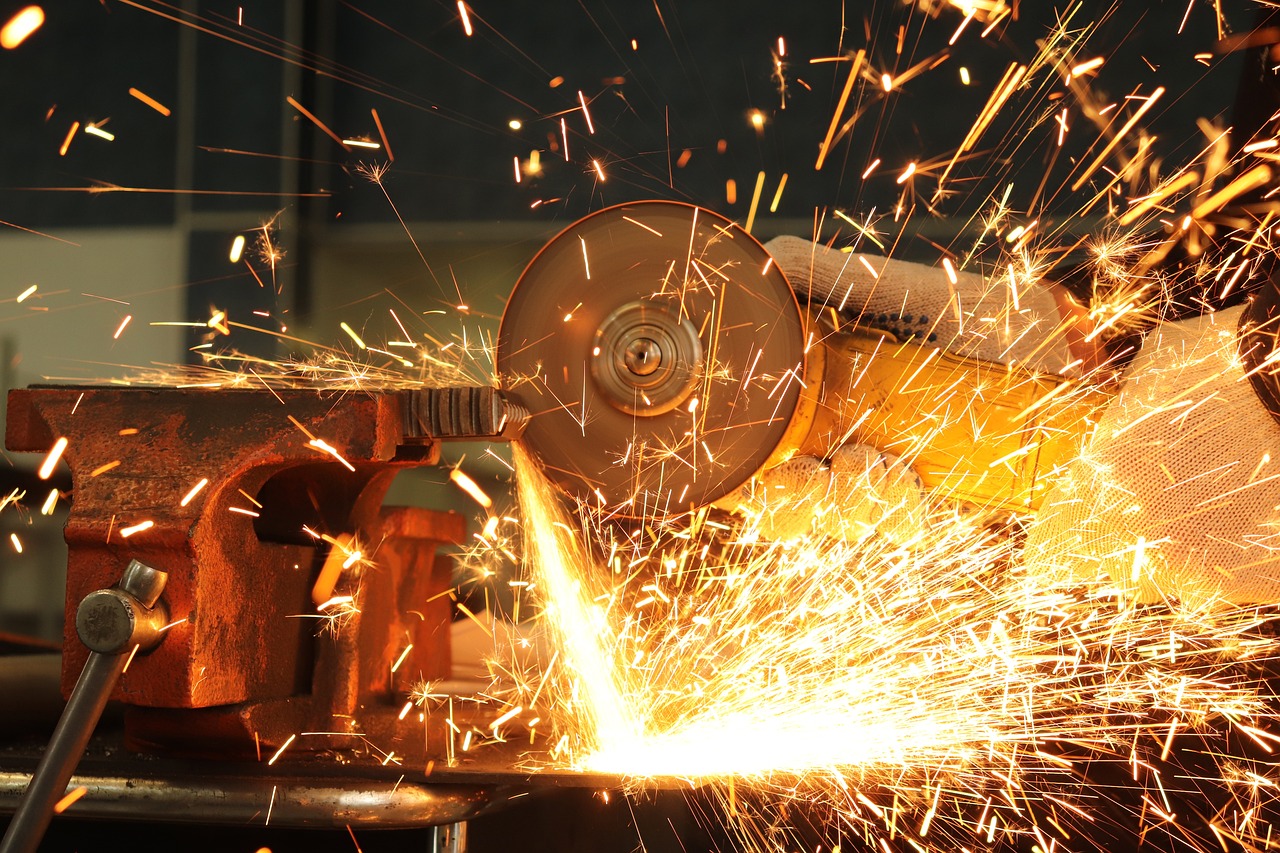
Outdoor Safety Precautions
Outdoor play is not just a delightful way for children to burn off energy; it’s also crucial for their physical and social development. However, with the freedom of outdoor exploration comes a set of safety challenges that every parent or caregiver must address. It's essential to create a safe environment where children can enjoy their time outside without unnecessary risks. So, what are some effective precautions you can take to ensure your child's outdoor adventures are safe and enjoyable?
First and foremost, supervision is key. Children are naturally curious and can get into trouble in the blink of an eye. Whether they’re climbing trees, riding bikes, or playing in the yard, having an adult present can make all the difference. This doesn’t mean hovering over them constantly, but rather being close enough to intervene if necessary. Think of it like being a safety net; you’re there to catch them if they stumble, but you’re also giving them the freedom to explore.
Next, let’s talk about safe play equipment. Not all toys and structures are created equal, and ensuring that your child is playing with age-appropriate equipment is vital. When selecting outdoor play items, consider the following criteria:
- Age Appropriateness: Ensure that the equipment is designed for your child's age group.
- Stability: Check that swings, slides, and climbing structures are sturdy and well-maintained.
- Material Safety: Look for non-toxic materials that won’t splinter or cause injury.
Additionally, be mindful of the area where your child plays. Are there any environmental hazards nearby? This could include things like thorny bushes, sharp rocks, or even bodies of water. If you have a pool, for instance, it’s crucial to have proper fencing and safety measures in place. Make a habit of doing a quick inspection of the play area before your kids dive into their adventures. Just like you wouldn’t go hiking without checking the trail, a little precaution can go a long way in preventing accidents.
Lastly, it’s important to teach your children about safety as well. Encourage them to understand the boundaries of where they can play and what they should avoid. For example, explain why they shouldn’t play near the street or why climbing trees can be dangerous. This not only helps them stay safe but also fosters a sense of responsibility. After all, safety is a team effort!
In summary, outdoor play is an essential part of childhood, but it comes with its own set of risks. By ensuring proper supervision, selecting safe play equipment, being aware of environmental hazards, and educating your children about safety, you can create a fun and secure outdoor environment. Remember, it’s all about balance—allowing your children the freedom to explore while keeping them safe at the same time.
Q: How can I effectively supervise my children while they play outdoors?
A: Try to stay within sight of your children at all times. Engage in their play or sit nearby to keep an eye on them. This way, you can ensure they are safe while still allowing them the freedom to explore.
Q: What should I do if I notice unsafe play equipment?
A: If you find any equipment that seems unstable or unsafe, it’s best to remove it from the play area until it can be repaired or replaced. Safety should always come first!
Q: How can I teach my children about outdoor safety?
A: Use simple language and relatable examples to explain safety rules. Role-playing scenarios can also help them understand what to do in various situations, reinforcing the idea of safety in a fun way.
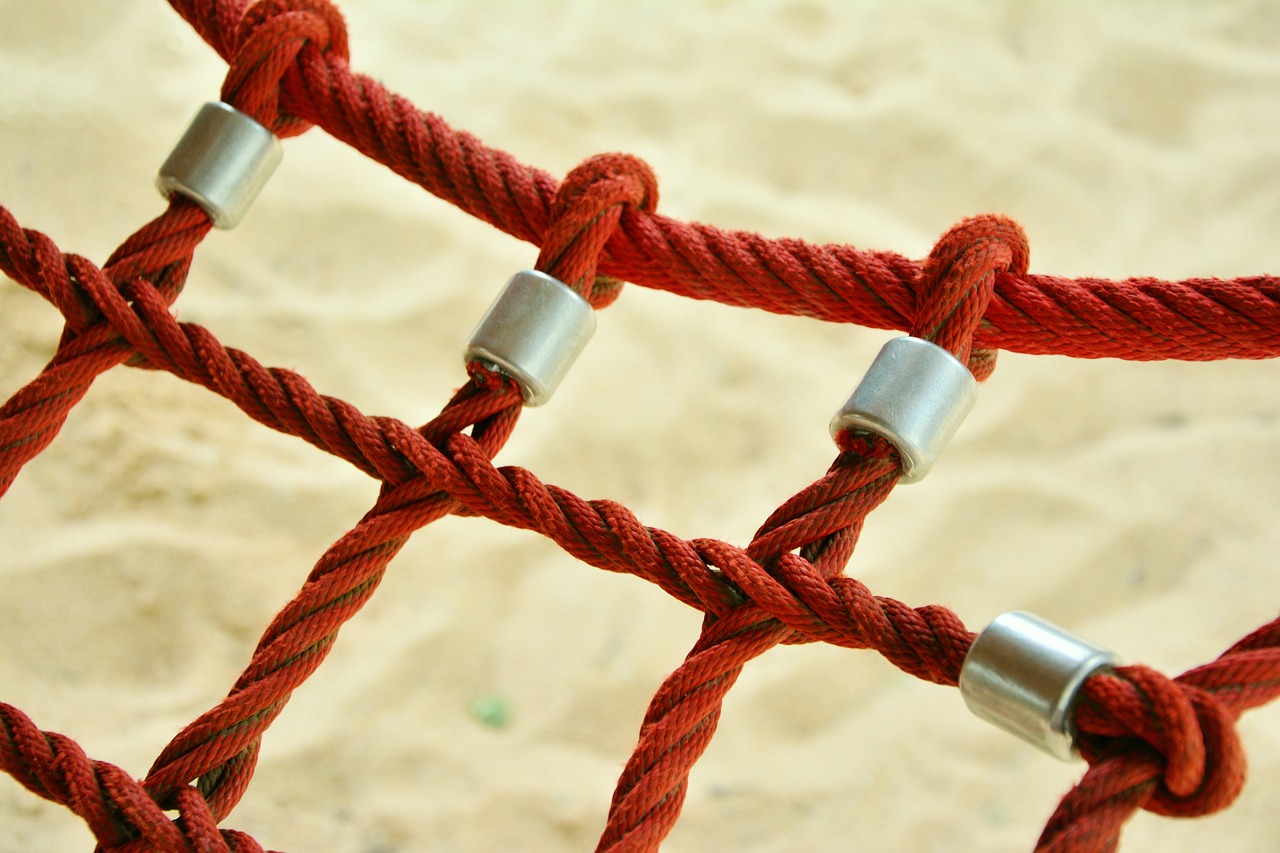
Choosing Safe Play Equipment
When it comes to keeping our little ones safe during outdoor play, choosing the right play equipment is absolutely crucial. Just like a knight needs a sturdy shield to protect themselves in battle, children need safe and secure equipment to ensure their playtime is both fun and hazard-free. But how do you determine what qualifies as "safe"? Here are some key factors to consider:
First and foremost, always look for equipment that is age-appropriate. Just as you wouldn’t give a toddler a complex puzzle meant for older kids, you should ensure that the play equipment matches your child's developmental stage. For instance, climbing structures designed for toddlers should be low to the ground and have gentle slopes, while older children can handle more challenging equipment.
Another important aspect is the material of the play equipment. Opt for items made from durable materials that can withstand the elements—think metal or high-quality plastic. Avoid wooden equipment that may splinter or degrade over time. It's also wise to check for any sharp edges or protruding parts that could pose a risk of injury. A simple rule of thumb is to run your hand along the edges; if it feels rough or sharp, it’s best to steer clear!
Additionally, consider the surface underneath the play equipment. Grass may seem soft and inviting, but it doesn't provide enough cushioning for falls. Instead, look for options like rubber mats, mulch, or sand, which can help absorb impact and reduce the risk of injury. You can even create a safe play zone by installing a playground surface that meets safety standards.
Lastly, it's essential to check for certifications and safety standards. Equipment that meets the guidelines set by organizations like the American Society for Testing and Materials (ASTM) is a good sign. Look for labels or tags that indicate compliance with safety regulations. This is like getting a stamp of approval from a trusted source, ensuring that the equipment has been tested for safety.
In summary, when choosing safe play equipment, keep these factors in mind:
- Age-appropriate design
- Durable materials
- Safe surfaces
- Certification and safety standards
By taking these precautions, you can create an environment where your children can explore, play, and develop their skills without unnecessary risks. Remember, a little diligence goes a long way in ensuring that playtime remains a joyous and secure experience for everyone!
Q: What are the safest materials for outdoor play equipment?
A: Look for equipment made from high-quality plastic or metal. Avoid wood that may splinter and check for any harmful chemicals in the materials.
Q: How can I ensure my child is using the equipment safely?
A: Supervise your child while they play, and teach them the rules of safe play, such as waiting their turn and not pushing others.
Q: What should I do if I notice damage to the play equipment?
A: Inspect the equipment regularly. If you find any damage, remove the equipment from use and repair or replace it as necessary.
Q: How often should I check the play equipment for safety?
A: It's best to check the equipment before each use and conduct a more thorough inspection at least once a month.

Supervision in Outdoor Areas
When it comes to keeping our little ones safe, supervision in outdoor areas is absolutely non-negotiable. Imagine a garden as a vast ocean of adventure, filled with treasures to discover and risks to navigate. It's a beautiful place where children can explore, play, and learn, but without vigilant eyes watching over them, that ocean can quickly turn into a sea of potential dangers. Whether they're climbing trees, riding bikes, or simply running around, children can find themselves in precarious situations in the blink of an eye.
One of the most important aspects of supervision is being present and engaged. It’s not just about being physically nearby; it’s about actively watching and understanding what your child is doing. This means putting down your phone, stepping away from distractions, and immersing yourself in their world. When you’re engaged, you can spot potential hazards before they become accidents. For instance, if your child is playing on a swing set, you’ll want to ensure they’re using it safely, watching for any other children nearby who might inadvertently bump into them.
Moreover, establishing clear boundaries is crucial. Children thrive on routine and understanding their limits. By setting specific areas where they can play and explaining the rules of those zones, you create a secure environment where they can explore freely but safely. For example, you might designate a specific area of the yard for riding bikes, while another area is reserved for playing with balls. Make sure they understand these boundaries and the reasons behind them.
Additionally, always be aware of the environmental hazards that could pose risks to your child. This includes everything from sharp tools in the shed to bodies of water like pools or ponds. Regularly assess your yard or outdoor play area for any potential dangers. For instance, if your backyard has a garden, ensure that any toxic plants are out of reach and that gardening tools are securely stored away. It’s all about creating a safe haven for your child to enjoy without unexpected surprises.
Lastly, consider the importance of group supervision. If your child is playing with friends, it’s wise to have more than one adult present. Not only does this provide an extra set of eyes, but it also allows for shared responsibility. You can take turns watching the kids, giving everyone a moment to relax or attend to other tasks while still ensuring that the children are safe. Just like in a well-coordinated team, communication is key. Talk to other parents about establishing a watchful eye system when your kids are playing together.
In summary, supervision in outdoor areas is about being proactive rather than reactive. By being present, setting clear boundaries, being aware of environmental hazards, and utilizing group supervision, you can ensure that your child enjoys their outdoor adventures while staying safe. Remember, the goal is not to stifle their fun but to enhance it by providing a secure backdrop for their explorations. After all, a watchful eye can turn a simple playdate into a safe and enjoyable adventure!
- How can I make outdoor play safer for my child? - Regularly inspect the play area for hazards, supervise actively, and establish clear play zones.
- What should I do if I can't supervise my child outside? - Consider arranging playdates with other parents or hiring a trusted caregiver to help keep an eye on them.
- Are there specific outdoor toys that are safer for young children? - Yes, always choose age-appropriate toys that are designed with safety features and are made from non-toxic materials.
- How can I teach my child about safety while playing outside? - Have discussions about potential dangers, set rules for safe play, and lead by example by practicing safety yourself.
Frequently Asked Questions
- What is childproofing and why is it important?
Childproofing involves making adjustments in your home to eliminate potential hazards that could harm small children. It's crucial because young kids are naturally curious and may not understand the dangers around them. By childproofing, you create a safer environment, allowing them to explore while minimizing the risk of accidents.
- How can I secure heavy furniture in my home?
To secure heavy furniture, you can use anti-tip straps or brackets that attach the furniture to the wall. This prevents tipping during play or if a child tries to climb on it. Additionally, placing heavier items on lower shelves can also help keep furniture stable.
- What should I do to keep my kitchen safe for children?
To keep your kitchen safe, store sharp objects, hot items, and hazardous substances out of reach. Use childproof locks on cabinets, designate a safe zone for your children, and always supervise them while cooking or when they’re in the kitchen. It’s all about creating boundaries and ensuring their safety.
- Why are non-slip bath mats necessary?
Non-slip bath mats are essential because they help prevent falls in the bathroom, which can be particularly slippery when wet. Choosing mats with a good grip and a soft texture can provide comfort and safety during bath time, making it a much safer experience for your little ones.
- What outdoor safety precautions should I take?
When it comes to outdoor safety, always supervise your children during playtime. Ensure that the play equipment is age-appropriate and in good condition. Also, be aware of the environment, such as nearby roads or water bodies, and establish clear boundaries for where they can play.
- How can I choose safe play equipment for my children?
When selecting play equipment, look for items that are specifically designed for your child's age group. Check for safety certifications, ensure there are no sharp edges, and verify that the equipment is stable and well-maintained. This way, you can provide a fun yet safe play environment.




